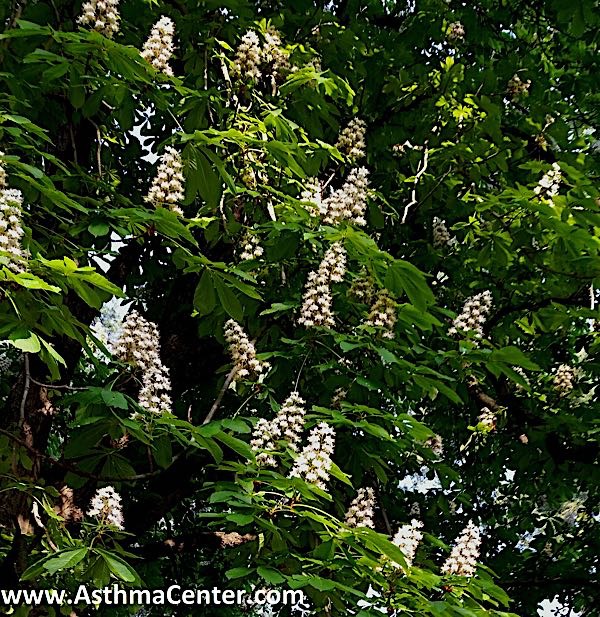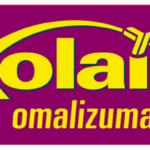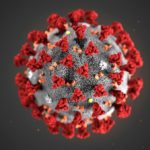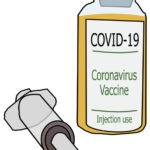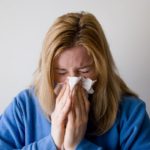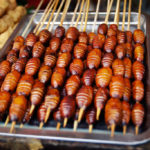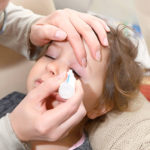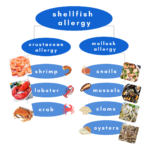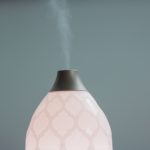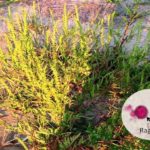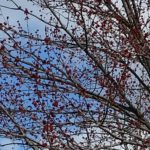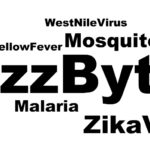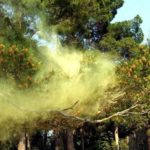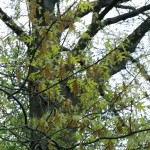allergies, allergy, allergy symptoms, Dr. Donald Dvorin, grass pollen, Horse Chestnut, local pollen count, mold spores, Morris Arboretum, mulberry tree pollen, oak tree pollen, pine tree pollen, pollen, pollen count, spring, The Asthma Center, tree pollen
Aging Oak Reigns…Horse Chestnut Blooms
“Here’s how I know Oak Tree Pollen volume will be declining in next several days,” explained Dr. Dvorin after finishing today’s count.
“Oak pollen grains in the air samples right now are not as fresh they were, compared to a few days ago.”
“You can tell when pollen grains are older,” Dr. Dvorin explained further. “Oak Tree pollen grains are still identifiable and predominant in both Mount Laurel and Philly air samples today, but they look ‘older’– when pollen has been in the air for awhile, the grains start to break down, and compared to fresh and recently released pollen, they just look older.”
Today, Delaware Valley’s only official Tree pollen count is between 60-70% lower today than yesterday at 150 pollen grains per cubic meter of air/24 hours. Tree pollen remains Very High and even though volume is reduced, it can trigger moderate to severe symptoms. For more information on pollen volume and symptom correlation, check out Dr. Dvorin’s recent pollen blog: Pollen Volume: We’ve Got the Full Story.
Oak Tree Pollen decreased but is the predominant tree pollen in both the urban (Philadelphia, PA) and suburban (Mount Laurel, NJ) air samples. Pine Tree Pollen volume dropped an estimated 75%-80% while Mulberry Tree pollen volume dropped an estimated 82%-90%.
Grass pollen remains Moderate.
Outdoor Mold Spores decreased and are High.
“Once again the weather is playing a significant role in the process,” said Dr. Dvorin. “Overnight lows in the 30s for our area and more rain—we’ve seen this again and again over the past weeks. “
The rain knocks light pollen grain to the ground, at least temporarily, and the buds on trees close up in response to chilly temperatures. Then when the ground dries out, sometimes quickly, the wind picks or the electrical charge in the air changes (with thunderstorms and lightning), sudden bursts and increases in pollen in the air spell trouble for allergy sufferers.
Be sure to check back in for The Asthma Center’s Daily Pollen and Mold Spore Count, the Delaware Valley’s ONLY official count station which is certified by the National Allergy Bureau. Subscribe to receive our daily counts by email or check out some of our other blog posts to learn more about what is in the air, how it can affect you, and what you can do about it.
A Parisian Spring in Philly
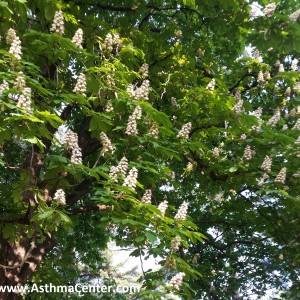
You may have heard before that Philadelphia’s city planning was based on Paris – just take a look at the Parkway! Another thing we have in common with Paris? Horse Chestnuts. These trees are very commonly planted in Paris and can be found on many grand boulevards and park settings. Our friend Tony Aiello, the Director of Horticulture and Curator at the University of Pennsylvania’s Morris Arboretum, helped us identify the Horse Chestnut you see in the picture above. This photo was taken on West River Drive by a member of The Asthma Center staff on her way home from work.
Horse Chestnut will grow to 40 feet tall with a spread of 40 feet. It will thrive in inner city environments due to its high tolerance of urban pollution. While the leaves begin to brown around the edges by late summer, these magnificent trees are stunning in May with pink flowers.
By 1904, an estimated ¼ of all trees in the Eastern US were American Chestnuts. However, in 1905 a fungus was discovered in the Bronx Zoo that quickly decimated the Chestnut tree population. Recently, thanks to cross breeding with Chinese Chestnuts that are resistant to the fungus, numbers are on the rise.
If you have one nearby, don’t fret too much. The pollen is heavy and doesn’t travel far. Also, don’t bother trying to eat the chestnuts. They are more bitter than their Chinese counterparts which we are accustomed to eating.
Make an appointment to see an allergist – Why Choose Us?
The best way to fight your allergies is to visit a board certified allergist, learn what your allergies are, create a treatment plan, and adjust as needed. No two allergy sufferers are alike, so don’t rely on over the counter medications when you could be targeting your symptoms with the help of our allergy experts!
Recent
Popular

